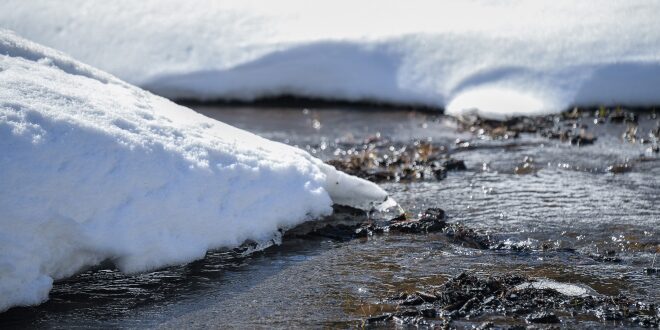The Department of Water Resources (DWR) conducted the third snow survey of the season at Phillips Station yesterday. The manual survey recorded 35 inches of snow depth and a snow water equivalent of 16 inches, which is 68 percent of average for this location for March. The snow water equivalent is key to DWR’s water supply forecast. Statewide, the snowpack is 63 percent of average for this date.
“With only one month left in California’s wet season and no major storms in the forecast, Californians should plan for a third year of drought conditions,” said DWR Director Karla Nemeth. “A significantly below-average snowpack combined with already low reservoir levels make it critical that all Californians step up and conserve water every day to help the state meet the challenges of severe drought.”
Although early season storms helped alleviate some drought impacts, a lack of storms in January and February heightens the need for conservation.
“With below average precipitation and snowpack up until this point, our latest statewide snowmelt forecasts are only 66 percent of average,” said Sean de Guzman, Manager of DWR’s Snow Surveys and Water Supply Forecasting Unit. “That is not enough to fill up our reservoirs. Without any significant storms on the horizon, it’s safe to say we’ll end this year dry and extend this drought a third year.”
Regionally, the Northern, Central, and Southern Sierra snowpacks are all standing just above 59 percent to 66 percent of average for this date, impacting watersheds across the state.
Adel Hagekhalil, general manager of the Metropolitan Water District of Southern California said, “It is becoming increasingly clear that this winter will not likely relieve California from the severe drought conditions challenging our state. That means another year of drawing down our already depleted reservoirs. How long those vital stored supplies last depends on you, me and every water user across Southern California. Like any savings account, the less we use today, the more we’ll have for the coming summer and fall months.
Current water conditions are now available in real time at California Water Watch. Californians can see their local hydrological conditions, forecasts, and water conditions down to their address or their local watershed. The site presents data from a variety of sources and allows the public to obtain a quick snapshot of local and statewide water conditions.
 California Water News Daily Your Source For Water News in California
California Water News Daily Your Source For Water News in California


